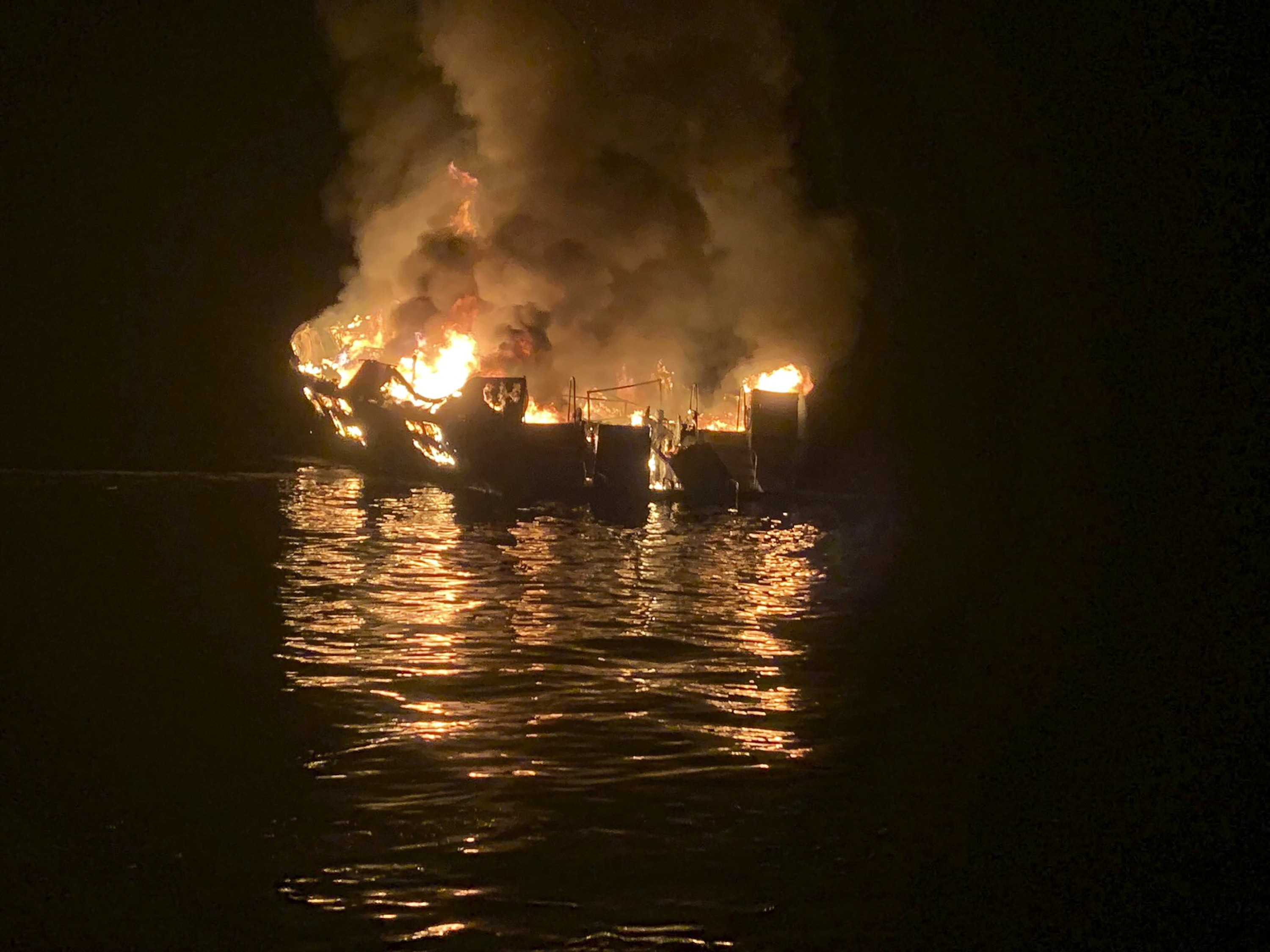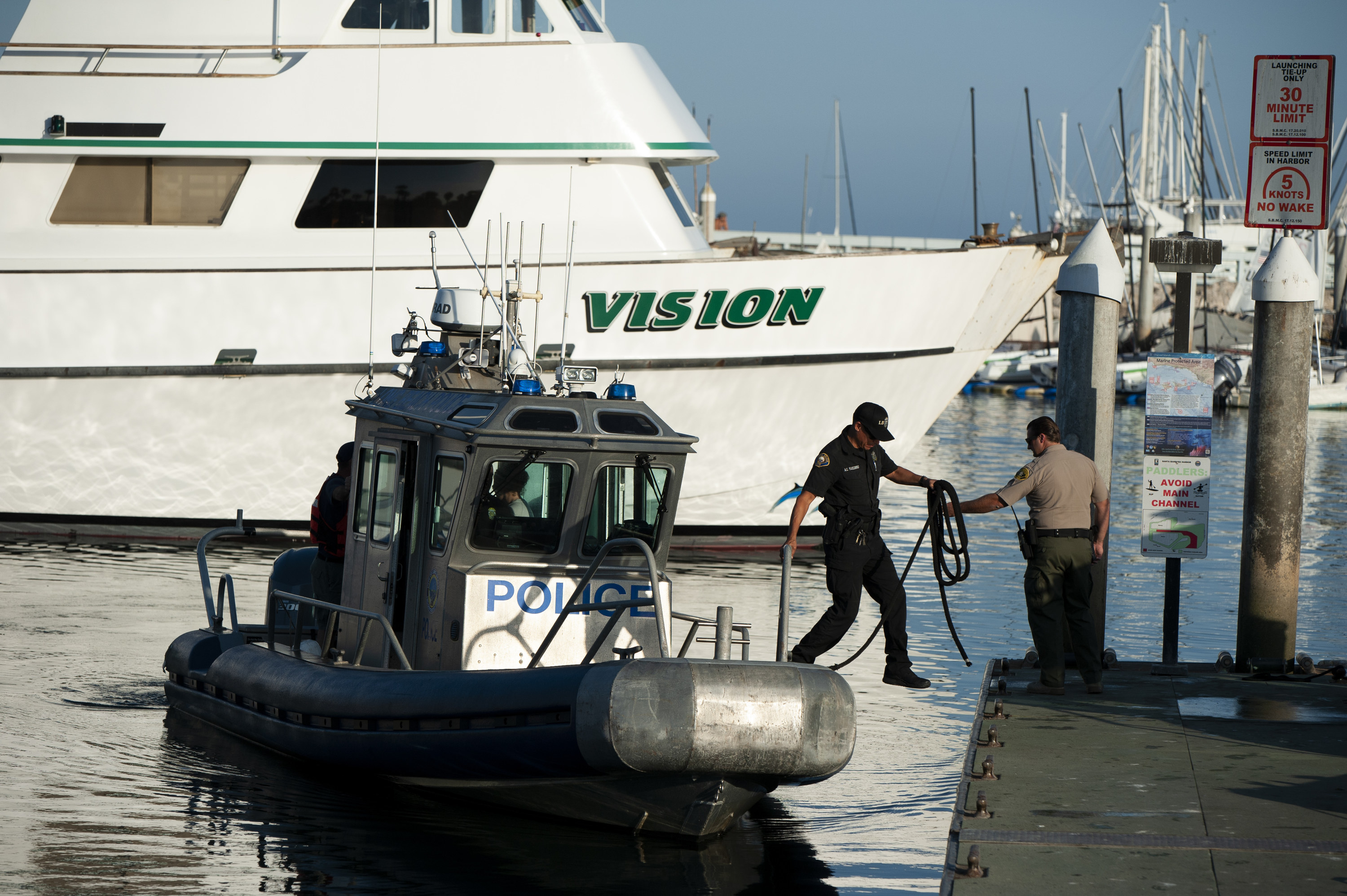
In the dark, early morning hours of Labor Day, a crew member aboard the Conception diving boat off California awoke suddenly to a loud noise. Springing from his bunk to the deck, he told investigators he saw flames erupting from the galley area where 34 people were sleeping, but it was already too late: the fire was too intense for frantic rescue efforts.
Authorities have since recovered 33 bodies from the vessel, which is now submerged under 60 feet of water off the coast of Santa Cruz Island, near Santa Barbara.
On Thursday, the lead investigator for the National Transportation Safety Board (NTSB), Jennifer Homendy, relayed what the crew had said they witnessed, providing the first official glimpse into the initial "harrowing" moments as flames overtook the 75-foot-long boat.
Owned by Truth Aquatics Inc., the boat and company are well-known in the tight-knit Southern California diving community, which is now reeling from the horrific maritime tragedy that killed teenagers, families, veteran divers, and one crew member, who were wrapping up a three-day scuba diving trip.

Only five crew members, who were sleeping on and above deck, survived the worst maritime disaster in the state's recent history.
The crew member who was awakened by the bang told investigators that when he opened the door of the wheelhouse, he saw flames erupting from the galley area.
"He tried to get down a ladder, and flames had engulfed the ladder," Homendy said.
Scrambling, the other crew members jumped from the bridge of the boat to the main deck. One person broke their leg doing so. They then rushed to the galley's double doors to try and reach the passengers below, but the fire was already too intense, Homendy said.
At around 3:15 a.m., the captain made a frantic mayday call to authorities, telling them that the boat was engulfed, 33 people couldn't escape, and "there’s no escape hatch for any of the people on board," Homendy said.
On Wednesday, Homendy told reporters that she toured the Vision, an 80-foot boat similar to the Conception and also owned by Truth Aquatics, which has filed a lawsuit to limit its liability in the maritime law case.
In an interview with the Los Angeles Times, she said she was “taken aback" by the narrow emergency hatch and tight exit. It was also difficult to find the light switch in the darkness and then push open the wooden door, she added.
During interviews with investigators, Conception crew members detailed their attempts to get to those below. After trying the double doors of the galley, they tried to go around the front in hopes of reaching people through the windows, but it was impossible, Homendy said, because "they could not get through the windows."
"At that point, due to heat, flames, and smoke, the crew had to jump from the boat," she said.
Two people swam to the back of the Conception to get the skiff, then collected the other two members and made it to a nearby fishing boat, the Grape Escape. That boat's owner, Shirley Hansen, told the Los Angeles Times that she and her husband awoke at 3:30 a.m. to "horrific pounding" and a group of distraught, wet men, some injured and just in their underwear.
Bob Hansen told the paper you could hear explosions from the engulfed diving boat "every couple of minutes."

Once on the Hansen's boat, the men tried to call 911 for rescue, Homendy said. One member then took the dinghy boat back to the Conception to try and rescue any survivors.
There were none.
Officials have been looking at the dive boat's maintenance and inspection records, which the Coast Guard said were up to date, and trying to understand if the 34 victims who had been sleeping in rows of narrow bunks even had a chance to escape.
Questions are also mounting about the boat's fire safety. Officials said Wednesday that federal law did not require this class of vessel to have a sprinkler system. But on her tour of the Vision, which is slightly larger than its fleet mate, Homendy said she saw one fire extinguisher in the bunk room, another in the galley area, and one on the bridge.

Citing unnamed federal officials, the Los Angeles Times also reported that the lack of a “roaming nightwatchman” to stay alert overnight and possible training deficiencies were also being investigated.
Addressing theories that a collection of cellphones and cameras plugged in and charging in the galley area might have sparked the fire, Homendy said investigators weren't ruling anything out.
"A lot of photography, videography, cameras, phones were charging on the vessel," she said. "We're not ruling out any possible ignition sources...including electrical systems and wiring."
Investigators will also be looking at the "adequacy of fire suppression systems," she added, including the smoke alarm system, which she described as one you could buy at Home Depot and "in this case, was not connected throughout the ship through any sort of wiring from the bunk room up to the bridge."
The crew member who jumped from his bunk in the wheelhouse told investigators that he never heard a smoke alarm. That might have been because it was not federally required to be wired to the wheel house, NTSB officials said.
"Part of what we are looking at...is the adequacy of existing safety regulations," Homendy said. "If we find, which we have many times, problems or concerns, or gaps with safety regulations, we issue recommendations to strengthen them."
